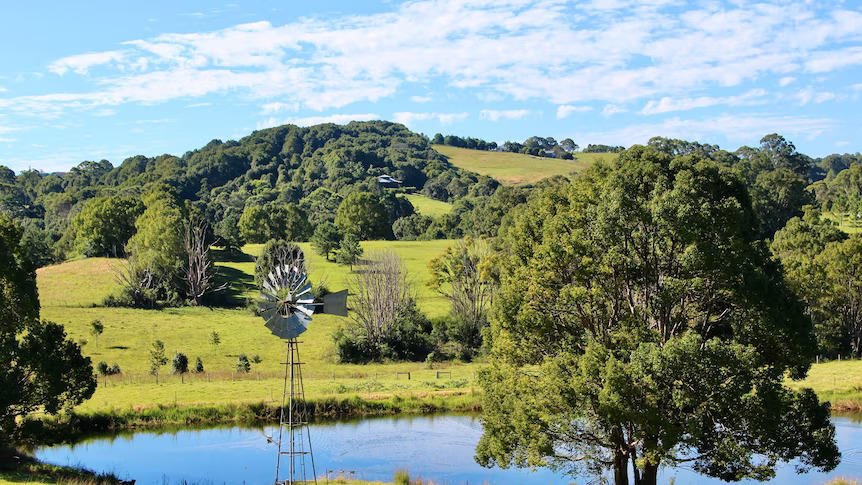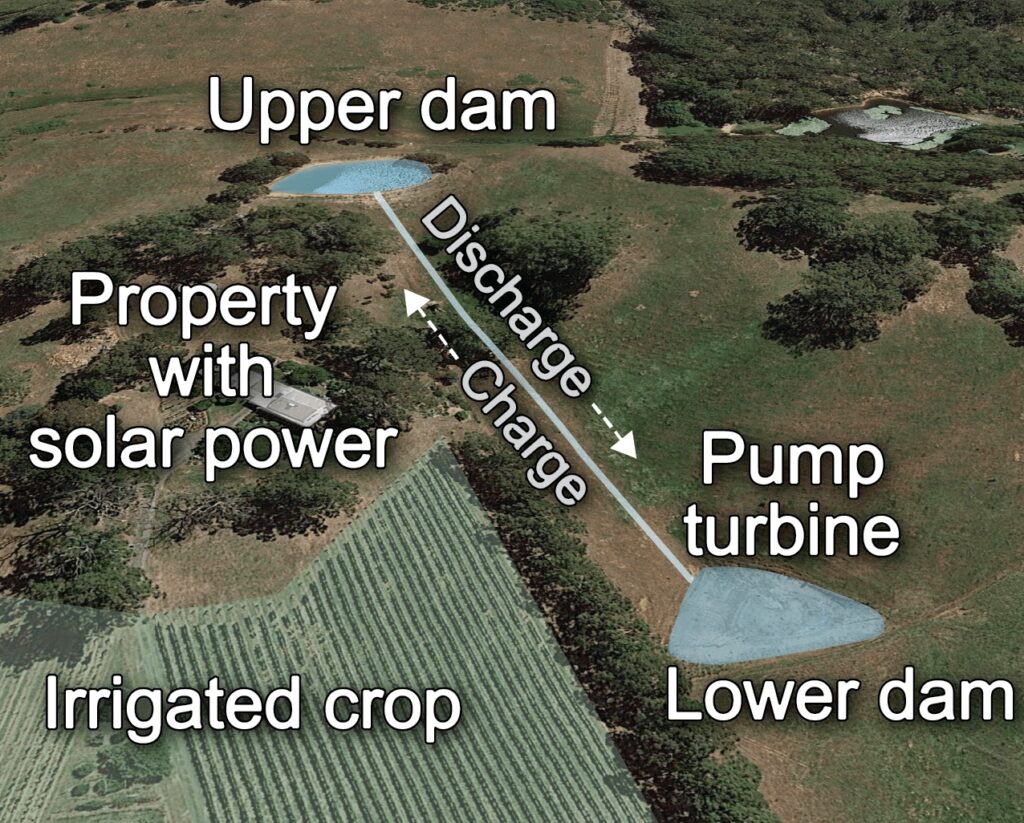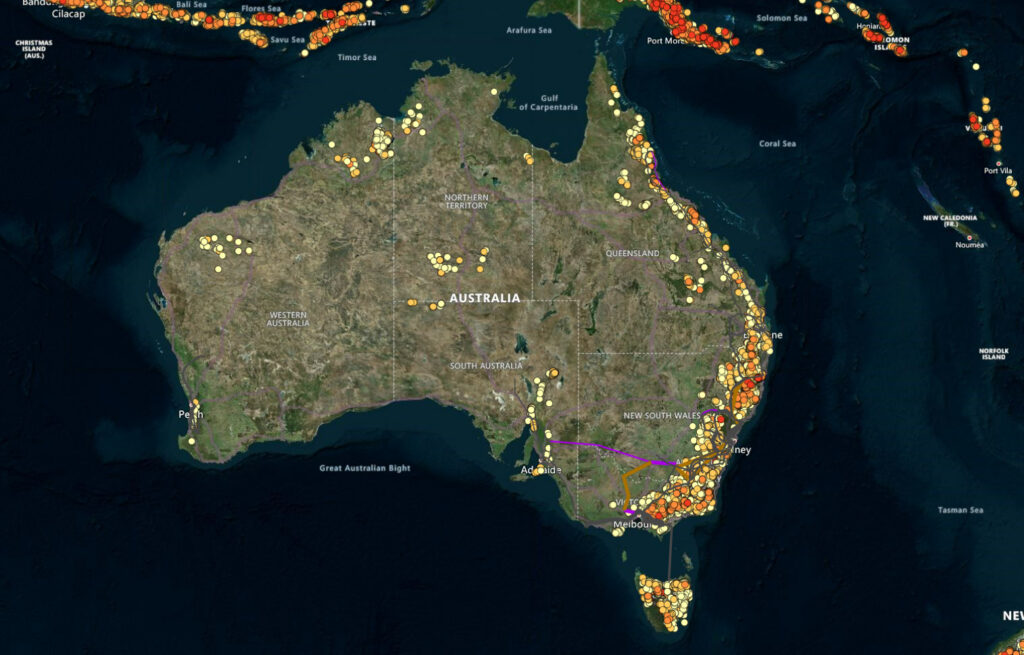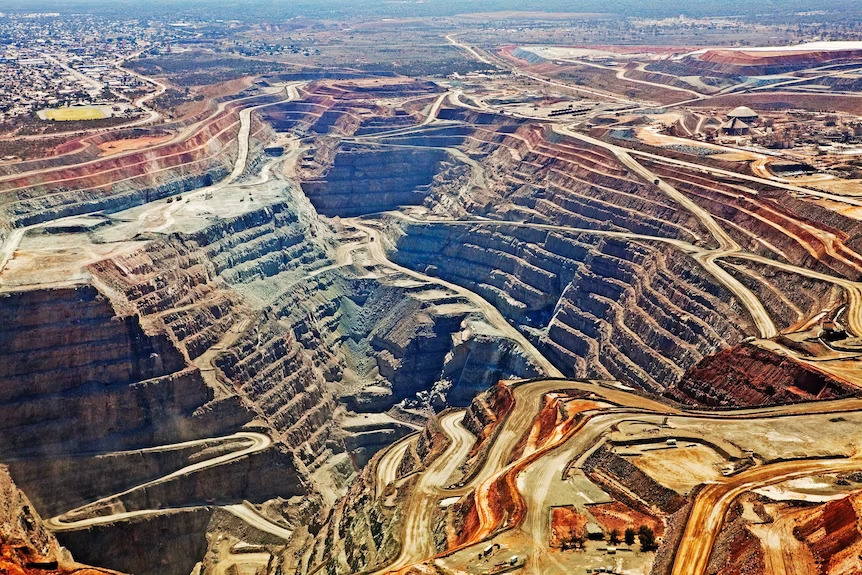Original publication by Nick Kilvert for abc.net.au on 7 September 2023

(Getty Images: Kiara Bloom)
At the Goudemand apartment building in Arras, France, a stagnant pool of green water about 30 centimetres deep sits on top of a flat, concrete roof.
One look at the water says it’s not meant for swimming.
Pipes drop down the building’s 30-or-so-metre elevation, connecting the rooftop reservoir with five water tanks in the basement below.
They can hold around 50,000 litres in all.
When the water is released from above, it drives a turbine capable of producing a total of about 3.5 kilowatt-hours of electricity — a few hours worth of energy use in the average Australian house.
Solar and wind energy pump the water back up when the Sun is shining or the wind is blowing.
The Goudemand building is home to one of the world’s few micro-pumped-hydro energy storage systems (micro-PHES), and possibly the only one using a rooftop as a reservoir.
In this case it’s used to reduce the load on the lithium batteries that power the building, lowering the frequency of the batteries’ cycles and extending their life.
But an analysis of the economics of the system published in Applied Energy found that it lacked the economy of scale of large-pumped-hydro projects — it would have been cheaper to buy another lithium battery.
One of the many costs was building and maintaining the water reservoirs for the system.
But what if these already existed? Could micro-pumped-hydro systems be built for less than batteries? And if so, where might these reservoirs be?
One potential source of energy storage could be farm dams, researchers say.
Dam nation
Thousands of potential reservoirs pockmark the Australian landscape.
But not all dams will do. They need to be in pairs for a start, or paired with a river, so water can flow downhill to drive a turbine, and be pumped back up for storage.

(Supplied: Nicholas Gilmore/UNSW)
Nicholas Gilmore is an engineer who investigates future energy systems at UNSW.
He decided to try to map just how many suitable, existing reservoir pairs there might be across rural and regional Australia.
Dr Gilmore and colleagues published their findings today also in the journal Applied Energy.
At a minimum, they judged the reservoirs needed to be large enough to be able to store 24 kilowatt-hours of energy when they were 70 per cent full.
Numbers vary a lot depending on climate and season, but for scale, an average three bedroom home in Australia uses in the vicinity of 16 kilowatt-hours each day.
There also needed to be a minimum slope of 17 per cent between the two water bodies, in order to drive a turbine effectively.
The dams also had to be within 500 metres of one another, for the systems to be practical and cost effective.
Using a previous dataset that combined high-resolution satellite imagery and machine learning, the number they came up with was a little over 30,000 suitable paired reservoirs.
And the average power storage capacity was about 30 kilowatt hours.
While the practical number of paired reservoirs is likely to be smaller than that given some dams will fall across property lines, or have physical barriers between the two, he thinks there are still alot of viable candidates.
A simple design with great potential (energy)
The bespoke design which Dr Gilmore and colleagues based their cost estimates on, uses a single pipe that runs between the two water bodies, and a pump to move the water uphill. With some tinkering, the same pump acts as a generator when run in reverse.

(Supplied: Morabito et al)
The design is used on a prototype in Belgium, which is capable of delivering about 17 kilowatt hours of power from its 625-cubic-metre water capacity. For comparison, an Olympic swimming pool holds around four times that.
And Dr Gilmore thinks the systems will improve as investment and research grows.
“Like any new technology it’s sort of inefficient, so it has scope to get better in the future.
“We’re sort of jury-rigging pumps from other applications and running them in reverse to generate power.”
The main idea behind the single pump-generator system is to reduce costs, making it competitive with batteries.
Using a single pump-generator, single connecting pipe, and existing reservoirs, Dr Gilmore’s team estimate the cost is less than lithium batteries on a per-KWh basis.
While household batteries are better for delivering immediate or dispatchable power, and they can deliver higher loads, micro-PHEV systems have their own strengths, Dr Gilmore said.
“The advantage it has is you can store lots and lots of energy [compared with batteries].
“It allows you to extend the use of your solar power for longer periods.”
Of course, they also have their weaknesses. Droughts would limit how much water and therefore power these systems could store.
Super Pit could become pumped hydro reservoir
Andrew Blakers is a professor of renewable energy engineering at the Australian National University not involved with the latest study.
His team have mapped potential sites for building paired reservoirs around Australia (and globally), but with a minimum of 2 gigawatt-hours storage. That’s enough to power a small town for around three days.
Their interactive map shows the locations of these sites, some with a capacity to store more than 500 GWh — for scale, Snowy 2.0 is 350 GWh and is estimated to be able to provide energy for 3 million homes for a week.

(Supplied: Andrew Blakers/ANU)
According to their mapping, Australia has the potential to not only meet its entire energy storage needs with pumped hydro, but to exceed it 300 times over.
“Which is really good because you can be extremely choosy [about where you put it],” Professor Blakers said.
While there are projects like Snowy 2.0 which we’re mostly familiar with, he said there are also strong prospects for converting old mine pits into pumped hydro storage dams.
“There’s a twinkle-in-the-eye proposal to use the Kalgoorlie Super Pit when they stop looking for gold in it. That would be a fantastic site because it’s a free pit with enormous volume.”
“[And] there are a few really good sites up in the Pilbara.”

(Getty)
Australia along with the rest of the world, is embarking on the largest energy transition in history as we seek to wean ourselves off fossil fuels and combat the dangerous climate change they are causing.
The Australian Energy Market Operator (AEMO) has identified energy storage as the most pressing need of the next decade in that transition.
Storage capacity needs to be increased around 17-fold by 2050, and AEMO has singled out large-scale pumped hydro as a key strategy in helping to stabilise the grid.
But although micro-pumped-hydro energy storage won’t play a role in grid storage, Dr Gilmore said it may still help rural Australians reduce their own emissions while stabilising their own energy supplies.
“There was a survey they did in the US and … one of the really interesting stats was, if you’d experienced an outage in the last six months, you were four times as likely to get a solar and battery system, as opposed to just a solar system.
“So I think security is a big one. People want to feel like they’ve got a reliable power supply.”




